The solar system is comprised of the Sun and all celestial bodies that orbit around it due to its gravitational pull.
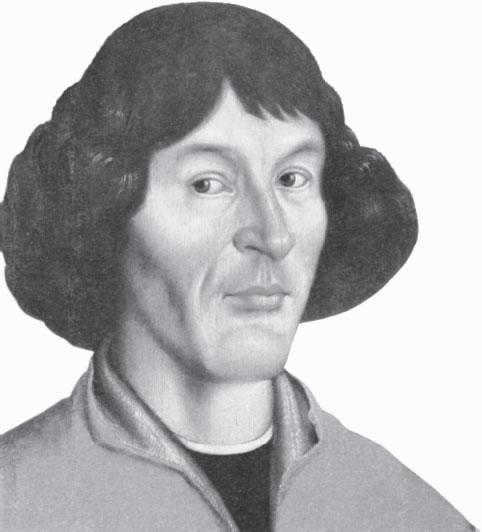
Nicolaus Copernicus (1473-1543), a Polish astronomer, is known for developing the heliocentric model of the universe.
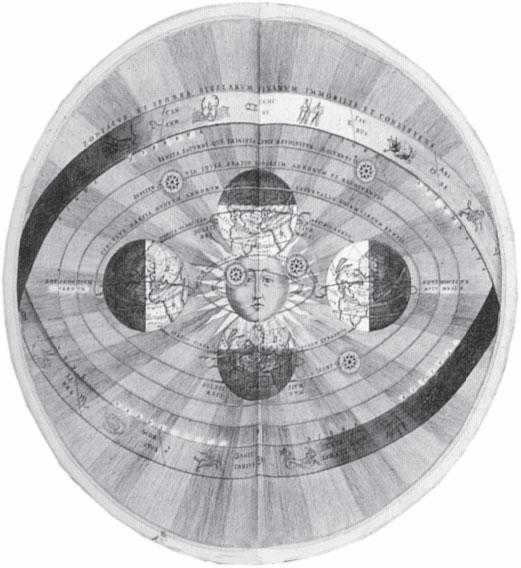
Copernicus’ theory of the solar system posited that the Sun was at the center, with the planets orbiting around it
In ancient times, people held the belief that the Earth was the center of the universe, with the Sun, Moon, and other planets orbiting around it. However, common people, such as hunters and farmers, were unaware of the existence of other planets. Throughout the day, they only observed the Sun, and in the evenings, they saw the Moon and a sky adorned with sparkling stars. This limited perspective often led to misconceptions. They observed the Sun rising in the morning, reaching its highest point at midday, and setting in the evening. From these observations, they concluded that the Earth was motionless, with the Sun revolving around it. Astronomers, who dedicated their studies to the sky and celestial bodies, shared a similar understanding. They also believed that the Earth was fixed and flat, although they acknowledged the existence of other planets. These planets, just like the Sun and the Moon, were thought to revolve around the Earth.
However, as early as the 4th century BC, the renowned ancient Greek scholar Pythagoras put forth the idea that the Earth is not flat, but rather has a spherical shape. Building upon his work, another scholar named Aristarchus, who lived in the 3rd century BC, expanded on Pythagoras’ theory and proposed that the Earth both rotates on its axis and orbits around the stationary Sun. While some scientists embraced this concept, others dismissed it and continued to advocate for their own theories. Approximately a century later, in the 2nd century BC, the ancient Greek scientist Ptolemy authored a book titled the Almagest. In this work, he presented his own perspective on the structure of the celestial realm and once again asserted that it is not the Earth that revolves around the Sun, but rather the Sun that revolves around the Earth.
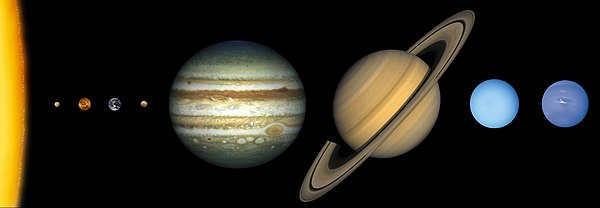
Copernicus’ planetary map
This was an error, but comprehending the true workings of space was a challenge. After all, during that period, there were no telescopes or other tools available to observe the movement of celestial bodies.
Only in 1543, when powerful telescopes were already in existence, did Polish scientist Nicolaus Copernicus successfully demonstrate that the Earth rotates on its axis during the day, akin to a spinning wolf, albeit at a very gradual pace that goes unnoticed by humans. Simultaneously, the Earth also revolves around the Sun, completing one full orbit over the course of a year.
It was Copernicus who demonstrated that not just Earth, but also other planets orbit the Sun. This discovery gave rise to the accurate concept of the entire solar system, with the Sun positioned at its core, and thus it is referred to as the Solar System. All other celestial entities, such as planets, asteroids, and comets, follow a specific trajectory as they orbit the Sun, and they remain intact due to the gravitational pull exerted by the Sun.
This piece of writing serves as an introductory excerpt.
Also, take a look at
Who and how was coffee discovered?
According to the legend, the extraordinary discovery of coffee occurred around 850 AD under the following circumstances. It is said that one day, while goats were grazing on the slopes of the mountains in the Ethiopian province of Kaffa, they happened to eat red berries from small trees.
Who was the first to discover the concept of the atom?
The concept of the atom has been around since ancient times, with the ancient Greeks being the first to propose its existence. The word “atom” itself is derived from the Greek word meaning “indivisible,” reflecting the Greeks’ belief that if you were to continually divide a substance, you would eventually reach a point where it could no longer be divided further.
What are the celestial bodies that form the solar system? The solar system is composed of various celestial bodies. Among them, there are celestial bodies of considerable size and ones that are relatively smaller. These celestial bodies are positioned at different distances from the Sun and revolve around it at varying speeds. One of the celestial bodies that is closest to the Sun is Mercury.
Who was the first to discover Australia?
Who was the first to discover Australia? Australia is known as the largest island in the world and also the smallest continent. It has a total area of 7,687,000 km2, which is almost as large as the continental United States (excluding Alaska). As early as the Middle Ages, there were tales about the South Pacific being the largest island on Earth.
Who was the explorer who first discovered Greenland?
Greenland, a land known for its icy terrain, was first discovered by an intrepid explorer. With its vast ice shell, measuring over 3,000 meters in certain areas, Greenland is not typically associated with the color green. However, despite its harsh conditions, there are still a few hardy plants and animals that manage to survive in this unforgiving environment.
Who was the initial person to uncover the planet Neptune and who obtained the credit for its discovery?
Who was the first to discover the planet Neptune and who receives the credit for its discovery? In 1821, it was determined that the observed characteristics of Uranus’ orbit did not align with the calculated characteristics based on Newton’s laws. There was a hypothesis that this discrepancy was a result of Uranus’ orbit not conforming to Newton’s laws.
2 GREETINGS TO THE SOLAR SYSTEM Nowadays, astronomers are capable of performing incredible feats. If a match were to be struck on the Moon, its flash could be observed. They can deduce the size of distant stars by studying the tiniest of ripples.
Who was the pioneer of hypnosis?
Who was the first person to discover hypnosis? If an individual possesses a position of authority, such as a police officer, a teacher, or a statesman, they can command obedience from others. However, they cannot control the thoughts or emotions of others. Nevertheless, the fascinating aspect of hypnosis lies in its mechanism of action.
Who was the first to find Alaska?
When white settlers arrived in Alaska, they encountered the Eskimos, Aleuts, and Indians who had already been living there. Alaska stands as one of the vastest regions ever explored and settled by the white man. In the beginning of the 18th century, the Russians made their way across Siberia
Who was the first to discover medicine?
Who was the first to discover medicine? The title of the first doctor can be given to the person who first provided relief to someone. For instance, someone who removed a splinter from a person’s finger performed a doctor’s task. Early humans practiced a form of medicine similar to what we have today.
Who found insulin?
Who discovered insulin? Insulin is utilized to treat a medical condition known as diabetes. When a person suffers from this ailment, specific deteriorations within their body result in the inability to process the carbohydrates and sugars required for energy. A significant gland,
Who discovered Australia?
Who discovered Australia? Australia is the largest island and smallest continent on the planet. Its total area of 7,687,000 square kilometers is nearly equivalent to the size of the continental United States (excluding Alaska). Dating back to the Middle Ages, tales circulated that the South Pacific was the most massive island in the world.
Who was the first to discover atoms? The concept of atoms, which are the smallest particles of any substance, was first developed by the ancient Greeks. Nowadays, we understand that atoms are not actually the smallest particles, as there are even smaller particles within atoms themselves. Additionally, we now know that we
Who was the first to discover Antarctica?
Antarctica was first discovered by the Russian circumnavigation expedition (1819-1821) led by F.F. Bellingshausen. This expedition utilized the sloops “Vostok” (commanded by F.F. Bellingshausen) and “Mirny” (commanded by M.P. Lazarev) in order to maximize exploration of the region.
Today, there are approximately 2000 planets that have been discovered by scientists, with 8 of them located within our Solar System. The Kepler telescope has played a significant role in expanding our knowledge of the number of known planets.
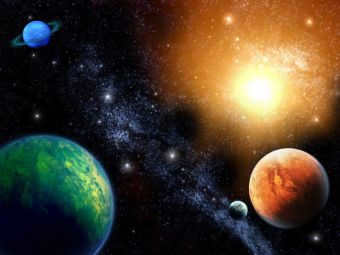

Newly Unveiled Planets
The exploration and unveiling of new planets beyond our solar system is a relatively recent endeavor, dating back about two decades.
In 2014, significant breakthroughs were achieved when the Kepler telescope team successfully identified 715 newly found planets. These planets are in orbit around 305 stars and bear a striking resemblance to our own solar system in terms of their orbital structure.
Most of these planets are smaller in size compared to Neptune.
Jack Lissauer and his team of researchers conducted an analysis on the stars that have multiple planets orbiting around them. The discovery of these potential planets took place between 2009 and 2011, resulting in the identification of 961 additional planets. The verification process employed by the researchers involved the use of a technique called multiple verification.
Novel Approaches to Planetary Detection
In the early stages of the quest to discover planets beyond our own solar system, scientists would examine each planet individually to determine its existence.
However, a groundbreaking method has since been developed that allows for the simultaneous examination of multiple celestial bodies. This innovative technique enables the identification of planets within systems that contain multiple planets orbiting a single star.
These planets that exist outside of our solar system are known as exoplanets. When new exoplanets are found, there are strict guidelines in place for assigning them names. The naming convention involves appending a lowercase letter to the star’s name, which corresponds to the planet’s orbit. A specific alphabetical order is followed, with the initial planet being designated with the star’s name and the letter “b,” and subsequent planets being named in alphabetical order.
Exploration of planets in our solar system
The planets in our solar system, including Mercury, Venus, Mars, Jupiter, and Saturn, have been known to humanity since ancient times. The ancient Greeks referred to these celestial bodies as “planets,” which translates to “wandering” in English. These planets can be observed in the night sky without the need for any optical aids.
With the advent of the telescope, astronomers were able to discover Uranus, Neptune, and Pluto.
Uranus was officially recognized as a planet in 1781 by the English astronomer William Herschel. Prior to that, it was mistaken for a star. Neptune, on the other hand, was mathematically predicted before its actual observation in 1846. The German astronomer Johann Galle employed mathematical calculations to pinpoint the location of Neptune before confirming its existence through telescopic observations.
The names of the planets in our solar system are derived from the ancient gods of mythology. To illustrate, Mercury was named after the Roman god associated with commerce, while Neptune was named after the god of the sea. Venus was named after the goddess of love and beauty, while Mars was named after the god of war. Lastly, Uranus was named after the god who represented the sky.
The discovery of Pluto occurred in 1930, leading scientists to initially believe that there were nine planets in our solar system. However, in the late 1990s, a heated debate arose within the scientific community regarding Pluto’s planetary status. Ultimately, in 2006, it was officially classified as a dwarf planet, reducing the number of recognized planets orbiting the sun to eight. This decision sparked significant controversy and continues to be a topic of discussion.
However, the issue of determining the exact number of planets in the solar system remains unresolved.
- Solar System Planets: The Order of the 8 (or 9) Planets, Robert Roy Britt, 2012
- NASA’s Kepler Mission Announces a Planet Bonanza, 715 New Worlds, 2014
- How Russia Plans to Explore Jupiter’s Satellite
- Which planet is visible from Earth
- Which planet in the solar system has the most satellites
- The history of the Sun and the Solar System
- How the Universe works
- What is in the universe and how it is organized
- Structure of the Solar System
- Determining the total number of planets
- The planets present in the solar system
- What does the solar system look like
- What are the appearances of the planets in the solar system
- How are all the planets arranged
- Mysteries of science: Does the universe have an edge
- What exactly is the solar system
- What is the universe and outer space
- Which planets can be observed from Earth
- Creative project: “Solar System”
- Why was the Earth named Earth
- How many dimensions exist in the universe
- The formation and evolution of the Solar System
- Which planets are part of the Solar System
- Which planets support life
- What is present on Mars
- The accomplishments of N. Vavilov in the field of science.
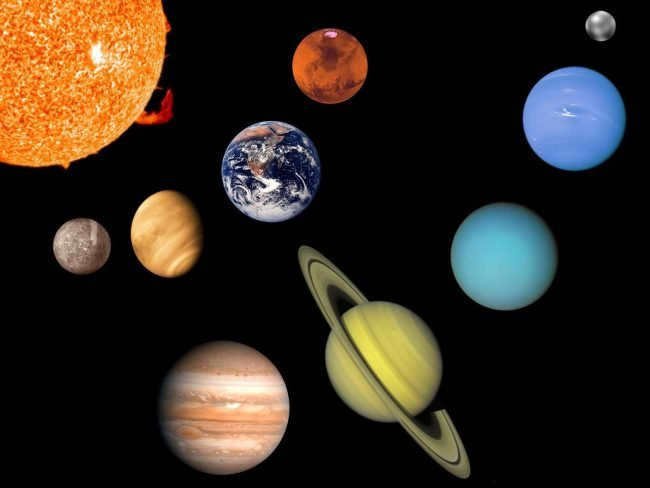
Satellites such as Kepler have been diligently searching for new planets within our galaxy. However, the initial discoveries of planets within our immediate vicinity, known as the solar system, were made centuries ago by astronomers. Let’s delve into the fascinating stories of how each planet in our solar system was first identified.
1.
Rewrite the text, making it unique, using the English language and keeping the HTML markup.
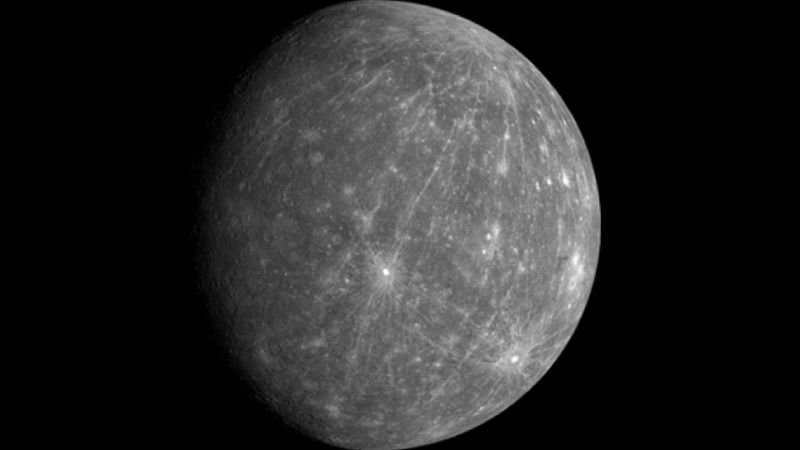
Mercury
Being the nearest planet to the sun in our solar system, Mercury has an orbit that ranges from 46 to 70 million kilometers away from the star. The planet’s rapid rotation around the sun was known to ancient astronomers, who associated it with various gods. The Assyrian astronomers linked Mercury to gods like Nabu, the scribe and messenger of the gods, while the ancient Greeks named the planet after Mercury, the messenger of the gods. This association is rooted in the planet’s quick orbit. In fact, a year on Mercury only lasts 88 days, making it the shortest year among all planets.
In 1631, Pierre Gassendi, an astronomer, made the initial observation of Mercury’s transit across the sun. Shortly after, Giovanni Zupi, another astronomer, identified phases that suggested the planet was orbiting the sun. Over time, additional astronomers contributed their own findings to expand on these discoveries. For instance, Giovanni Schiaparelli, an Italian astronomer, studied the planet and determined that Mercury was tidally locked to the sun, meaning it always faces the sun with the same side.
During the era of space exploration, numerous discoveries have been made about the planet, revealing a substantial amount of new information. In the early 1960s, Soviet scientists pioneered the use of radar to study the planet, while scientists at Arecibo Observatory utilized a radio telescope to determine that the planet actually completes one rotation every 59 days, contradicting the previous belief of 88 days. The planet’s surface was extensively mapped during the initial visit of the Mariner 10 probe in 1974, and in 2008, the MESSENGER probe arrived and remains in orbit around the planet to this day.
2.
Venus, the second planet in our solar system, is renowned for being the most radiant among all the planets visible from Earth. Its luminosity has captivated the interest of humans since ancient times, with the earliest mentions of it dating back to the Babylonians, who referred to it as Ishtar. In Roman mythology, Venus was revered as the goddess of beauty, while the Mayans regarded it as the sibling of the sun. The groundbreaking observations made by Galileo Galilei in 1610 further solidified our understanding of Venus, as he documented its various phases and established its orbit around the sun. However, it wasn’t until the 1960s, when technological advancements allowed for surface exploration, that we were able to gather concrete data about Venus. Despite its inhospitable atmosphere, many speculated about the possibility of life on Venus due to its comparable size to Earth.
3.
Rephrase the text, making it unique, using the English language and preserving the HTML markup:
3.
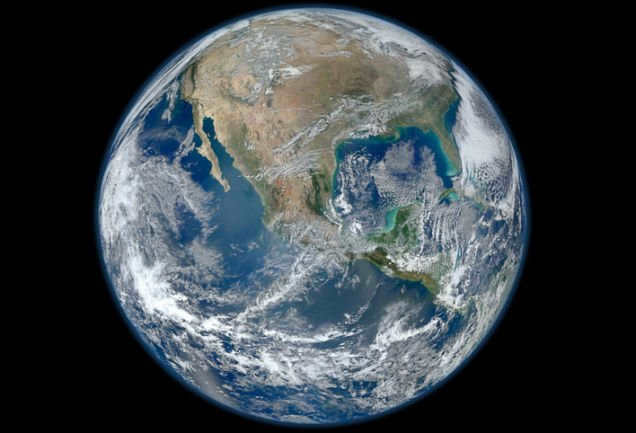
The Discovery of Earth
Throughout history, humanity has continuously observed the planet Earth. However, it took some time for us to truly understand the nature of our home. For many centuries, people believed that the Earth was different from the celestial objects observed above it. They thought that everything revolved around the Earth. It was not until the time of Aristotle that philosophers determined the Earth’s spherical shape by observing the shadow of the Moon.
Nicolaus Copernicus, also known as Micolaus, proposed a heliocentric perspective of the solar system as early as 1514. In 1543, his seminal work “On the Rotation of the Celestial Spheres” was published, challenging the prevailing view. Although controversial, his theory sparked Johannes Kepler’s extensive trilogy on Copernican astronomy. Kepler formulated three laws of planetary motion: planets orbit the Sun in an elliptical path, with the Sun situated at one of the focal points; each planet moves in a plane that passes through the center of the Sun; and the radius-vector connecting the Sun and the planet sweeps out equal areas in equal intervals of time. Moreover, the squares of the planets’ orbital periods are proportionate to the cubes of their major semi-axes. These laws revolutionized our understanding of planetary motion and prompted a reevaluation of the previous model of the solar system. Initially met with skepticism, Kepler’s theories eventually gained widespread acceptance throughout Europe. By the time Copernicus published his ideas, Ferdinand Magellan’s expedition had successfully completed the first circumnavigation of the globe in 1519.
Only on October 24, 1946 did we have the opportunity to see our planet for the first time, when the initial photograph of Earth was captured by a modified Faou-2 rocket launched from a testing ground in New Mexico.
4.
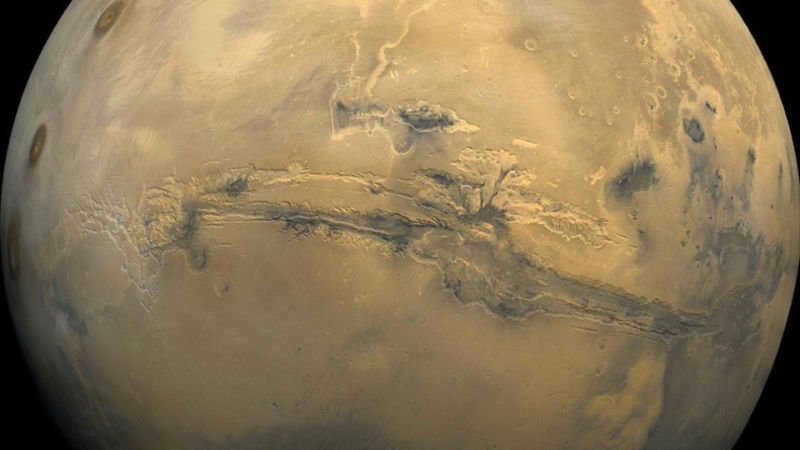
Advances in telescopes in subsequent years brought about a novel method of observing the planet. Astronomers were able to gauge the temperature of the planet and ascertain its atmospheric composition and mass. Throughout the 1960s, the Soviet Union made multiple attempts to send eight probes to Mars, but regrettably, they were unsuccessful. However, Mars orbiters triumphantly reached the planet in the 1970s. NASA also made an unsuccessful endeavor to dispatch Mariner 3 to Mars, but Mariner 4, launched in 1964, triumphantly orbited the planet and revealed it to be devoid of life. Nevertheless, the Viking missions were the true pioneers in exploration: On July 20, 1976, the probe successfully landed on the Red Planet for an unprecedented mission that lasted until 1982. Viking 2 soon followed, touching down on Mars in September 1976 and remaining operational until 1980.
5.
Rewrite the text, making it unique, using the English language and preserving the HTML markup:
5.
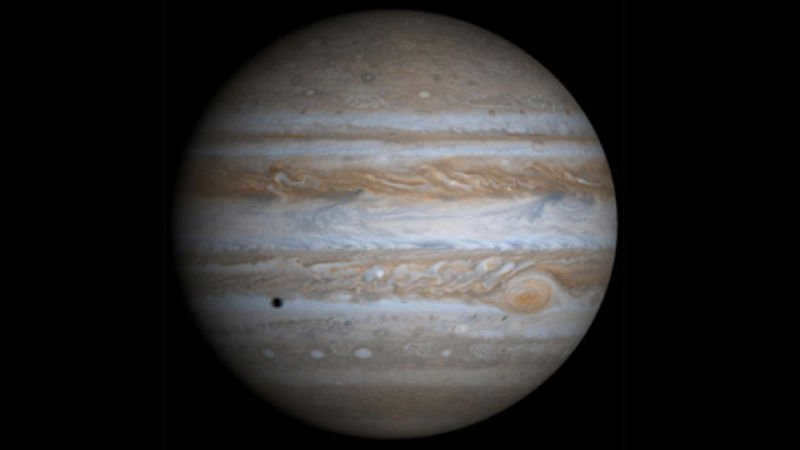
6.
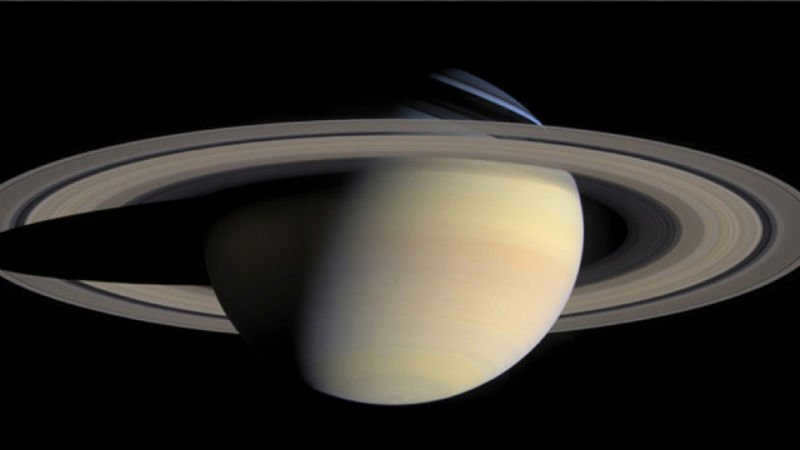
When NASA embarked on its exploration of the outer planets, Saturn was initially visited by the Pioneer-11 probe in September 1979, capturing numerous images. The subsequent arrival of the twin Voyager probes in 1980 and 1981 provided us with a wealth of high-resolution images. Saturn then presented a pivotal decision point for the Voyager probes: Voyager 1 utilized Saturn’s gravitational pull to gain acceleration and exit the solar system, while Voyager 2 continued its journey to Uranus. It wasn’t until 2004 that Saturn received its next visitor in the form of the Cassini mission, which continues to examine the planet and its moons.
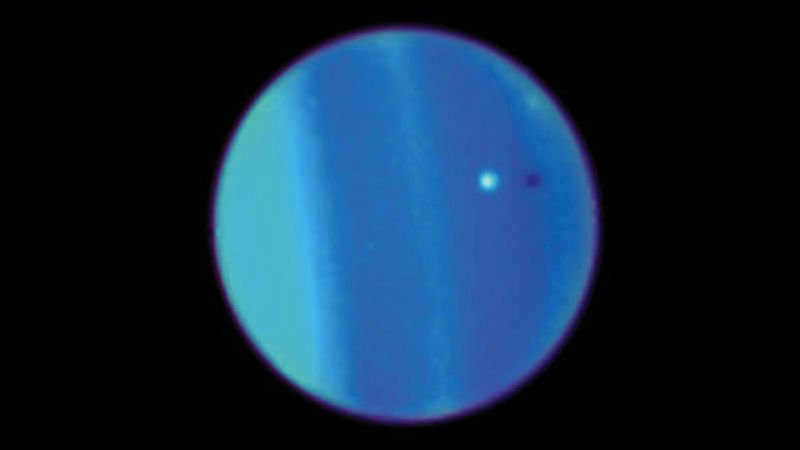
However, the planet had a highly unique characteristic: instead of spinning like the rest of the planets in its system, Uranus is positioned on its side and rotates horizontally. The cause of this phenomenon remains a mystery, though some scientists have proposed the idea of a planetary collision as a possible explanation. In 2009, researchers from the Paris Observatory hypothesized that during Uranus’ early stages of formation, a moon emerged from the surrounding planetary disk, causing the planet to tilt. During a flyby in 1986, the Voyager 2 spacecraft extensively analyzed Uranus’ atmosphere and made significant discoveries, including the identification of several additional moons and a ring system. This mission marked the first and only time a probe has reached Uranus, and there are currently no plans for future missions to the planet.
8.
Rephrase the text, making it unique, using the English language and preserving HTML markup:
8.
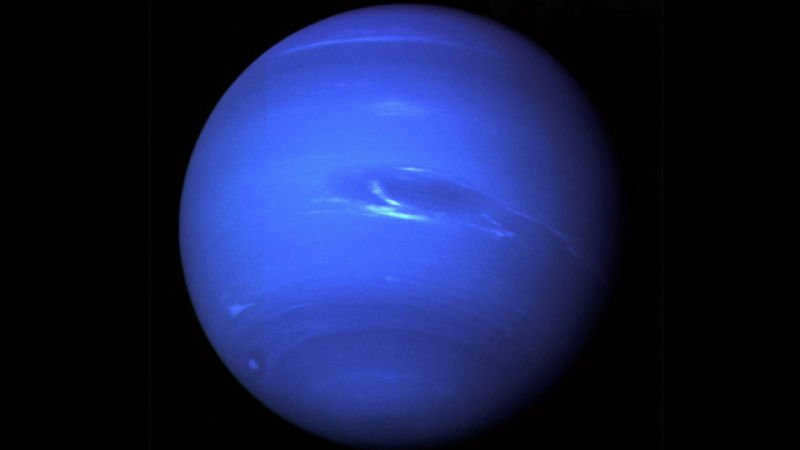
Neptune
The final official planet in our solar system is Neptune. Orbiting 30 astronomical units away from the Sun, it was the first planet to be detected using mathematical calculations instead of direct observation. While studying Uranus, astronomers noticed discrepancies between their predictions and the planet’s actual characteristics, prompting further investigation. It was already known that the planet’s orbit was influenced by other large bodies in the solar system, but Uranus was still defying expectations. In 1835, the perihelion of Halley’s Comet occurred later than anticipated, leading astronomers to theorize the existence of an additional object in the system affecting Uranus.
On August 25, 1989, the Voyager 2 probe made a visit to Neptune, where it conducted readings of the planet and conducted a study of Triton, where it also discovered the moon Nereid. During this visit, it was discovered that the planet was surprisingly warm, much warmer than anticipated, and possessed a turbulent atmosphere featuring a Great Dark Spot similar to Jupiter’s Great Red Spot. Following its visit to Neptune, Voyager 2 departed the solar system and ventured into deep space.
The tale of the exploration of our solar system and its planets provides a fascinating insight into the history of science and humanity’s comprehension of our neighboring celestial bodies. The study of our planets has revolutionized our perspective of the world around us and our place in the vast universe.
Science & Technology September 1, 2016 2,248 views
Foods that promote body cleansing 1. Red Beets This is a “purifier&ra.
Helpful signs to assist the chef The composition of beneficial substances in certain food items Pork. .
Smithsonian magazine, published by the esteemed Smithsonian Institution (Washington, D.C.), .
–References
–Music
–
[This video is on a restricted domain].
Include player for yourself
© Nakukryskin
–Always available
–Find information through diary
–Receive updates via email
–Areas of interest
–Data analysis
Once upon a time, individuals pondered, defied the Church and the entire government, substantiating their theories about the universe. Naturally, each person had their own motivation, but thanks to collective efforts, we now have a significant understanding of the cosmos and the celestial bodies that encompass us.
Let us recall a few of the breakthroughs made by scientists and address the questions: “When were the planets of our solar system discovered and what is the origin of their names?“.
Solar System
1. Mercury It is challenging to determine the exact date of Mercury’s discovery, but the earliest known observation of the planet can be found in a collection of Babylonian astronomical tables recorded by Assyrian astronomers around the 14th century B.C. The Sumerians referred to the planet as the “jumping planet.” Initially, it was associated with the god Ninurta, who was the god of happy warfare. Later, it was called “Nabu” in honor of the god of wisdom and scribe. During ancient Greece, the planet was known as Στίλβων (“Stilbon”) and Ἑρμάων (“Hermaeon”), which were forms of the name of the god Hermes, according to Hesiod. The Greeks later started calling the planet “Apollo.” The earliest observation of Mercury can be found in a collection of Babylonian astronomical tables from the 14th century B.C. There is a belief that the name “Apollo” referred to its visibility in the morning sky and “Hermes” (“Hermaeon”) in the evening sky. The Romans named the planet after Mercury, the god of commerce, which is equivalent to the Greek god Hermes, due to its faster movement across the sky compared to other planets. Claudius Ptolemy mentioned the possibility of a planet passing through the disk of the Sun in his work “Hypotheses about the Planets.” However, such passage has never been observed, possibly because a planet like Mercury is too small to be observed or the moment of passage occurs infrequently. Mercury was also observed in ancient China, where it was called Chen-hsing (“Morning Star”). In modern Chinese, Korean, Japanese, and Vietnamese cultures, the planet is known as the Water Star.
In ancient China, Mercury was referred to as Chen-hsing, which means “Morning Star.” In Indian mythology, Mercury was called Budha. This god, the son of Soma, was considered supreme on Wednesdays. In Germanic paganism, the god Odin was also associated with the planet Mercury and Wednesday. The Maya Indians represented Mercury as an owl (or possibly as four owls: two corresponding to Mercury’s morning appearance and two to his evening appearance), which was the messenger of the afterlife. In Hebrew, Mercury was called “Kohav Hamah” (“Sun Planet”). Medieval observations of Mercury in the northern parts of Europe were challenging due to the fact that the planet is always observed at dawn or evening against a background of twilight sky and quite low above the horizon, especially in northern latitudes. Its period of best visibility occurs several times a year, lasting about 10 days. Even during these periods, it is not easy to see Mercury with the naked eye, as it is a relatively dim star against a fairly bright sky background. There is a legend that Nicolaus Copernicus regretted never seeing Mercury in his entire life. However, Copernicus’ work “On the Rotations of the Heavenly Spheres” does not contain a single example of Mercury observations. Nevertheless, he described the planet based on the observations of other astronomers. As he himself mentioned, Mercury can still be observed from northern latitudes with patience and cunning.
The surface of the planet Mercury
Mercury was first observed through a telescope by Galileo Galilei in the early 17th century. However, his telescope was not powerful enough to observe Mercury’s phases. In 1631, Pierre Gassendi made the first telescopic observation of the planet’s passage across the Sun’s disk, but the moment of passage had already been calculated by Johannes Kepler. In 1639, Giovanni Zupi discovered with a telescope that the orbital phases of Mercury are similar to those of the Moon and Venus, confirming that Mercury orbits the Sun. Galileo Galilei was the first to observe Mercury through a telescope in the early 17th century. An extremely rare astronomical event is the transit of one planet’s disk across another as observed from Earth. Venus transits Mercury once every few centuries, and this event has only been observed once in history on May 28, 1737, by John Bevis at the Royal Greenwich Observatory. The next transit of Venus across Mercury will occur on December 3, 2133. The difficulties associated with observing Mercury have resulted in it being less studied compared to other planets.
The Sun’s proximity also poses challenges for telescopic study of Mercury. For example, the Hubble telescope has never been and will never be used to observe this planet, as its equipment would be irreversibly damaged if it attempted to observe objects close to the Sun. Mercury is the least studied planet in the Earth group. In the 20th century, telescopic methods of studying it were supplemented by radio astronomical, radar, and spacecraft studies. The latest research data on Mercury: – Mercury’s surface temperature: 600 K at the sunlit point and 150 K on the unlit side.
– The reflective properties of Mercury and the Moon are similar.
– Mercury’s rotation period: 59 days. In the picture, you can see Mariner 10, the first spacecraft to reach Mercury. Two spacecraft were sent to explore Mercury: Mariner 10 flew past Mercury three times between 1974 and 1975, with the closest approach being 320 km. Several thousand images were obtained. Further research from Earth has indicated the possibility of water ice in polar craters. Russia plans to send the first Mercury-P landing station to the planet. The project was initially planned for 2019 but has been significantly delayed until after 2031.
Venus has been observed since ancient times, and its brilliance far surpasses the brightest stars, making it easily visible in the sky. Throughout history, it has captivated the attention of humans, and it was named after the goddess of love. The planet has a uniform white color. Similar to Mercury, Venus has periods of visibility in the morning and evening, leading ancient civilizations to believe that they were different celestial bodies. When observed through a telescope, one can observe the apparent phase changes on the planet’s surface. This phenomenon was first documented by Galileo in 1610.
On the planet Earth, one can witness the rare occurrence of Venus passing in front of the Sun’s disk. When viewed through a telescope from our planet, Venus appears as a small black circle against the backdrop of the immense Sun. This phenomenon was first observed by the English astronomer Jeremiah Horrocks on December 4, 1639, after he had accurately calculated its timing.
Another English astronomer, Jeremiah Horrocks, was the first to witness the transit of Venus across the Sun’s disk on December 4, 1639. M. V. Lomonosov, a Russian scientist, also observed this event on June 6, 1761, which was documented as “The Phenomenon of Venus on the Sun.” Although this rare event was witnessed worldwide, it was only M. V. Lomonosov who took note of the “thin, hair-like glow” that appeared around Venus as it made contact with the Sun’s disk. This observation led to the discovery of an atmosphere on Venus, a groundbreaking finding that predates the discovery of spectral analysis by a hundred years!
Further exploration of Venus has been carried out through the use of spacecraft. The Soviet Venera-1, launched on February 12, 1961, was the first spacecraft designed for the purpose of studying Venus. It was followed by other missions such as Venera, Vega, Mariner, Pioneer-Venera-1, Pioneer-Venera-2, Magellan, Venera Express, and Akatsuki, sent by the Soviet Union, the United States, Europe, and Japan respectively. In 1975, the Venera-9 and Venera-10 spacecraft transmitted the first images of Venus’ surface back to Earth. However, due to the harsh conditions on the planet, none of the spacecraft were able to operate for longer than two hours. Roscosmos, the Russian space agency, has plans to send the “Venera-D” station to Venus, equipped with a satellite and a more durable probe that is expected to function on the planet’s surface for at least a month.
In the field of astrology, it is customary to utilize Latin terms when referring to celestial bodies. In this particular language, the designation for our planet is Terra, which translates to “earth” or “soil”. This term can be traced back to the Proto-Indo-European word ters, meaning “dry” or “to dry”. Additionally, the name Tellus is often employed to denote our planet. As mentioned earlier, the Romans used this name to refer to Earth.
So why exactly was our planet named Earth? The answer is quite simple: the early humans who bestowed a name upon our planet were unaware of its composition, which consists of over 70% water. As beings who predominantly inhabit land, they could only liken the place they lived to the solid ground beneath their feet. One can draw parallels to biblical tales of God creating the firmament of Earth and the formation of the first man, Adam, from clay. The name Earth was given because it served as the sole habitat for humanity and because the initial inhabitants had no knowledge of the planet’s vast water resources.
Mars
The exploration of Mars has a long history, dating back over 3.5 thousand years ago in ancient Egypt. The planet was named after Mars, the Roman god of war (known as Ares in ancient Greece). Due to its reddish hue caused by iron oxide, Mars is often referred to as the “red planet.” Additionally, Mars has two satellites, Phobos and Deimos.
The study of Mars began in ancient Egypt over 3.5 thousand years ago. Babylonian astronomers also made observations and developed mathematical methods to predict the planet’s position. Building on the knowledge of the Egyptians and Babylonians, ancient Greek philosophers and astronomers created a comprehensive geocentric model to explain the movement of the planets. In later centuries, Indian and Islamic astronomers calculated the size and distance of Mars from Earth. Johannes Kepler introduced a more precise elliptical orbit for Mars that matched the observed data. In 1659, Francesco Fontana made the first recorded drawing of Mars, depicting it as a black spot through a telescope.
In 1660, Jean Dominique Cassini added two polar caps to the black spot.
In 1888, Giovanni Schiaparelli named various surface features on Mars, including the Aphrodite Sea, the Eritrean Sea, the Adriatic Sea, the Cimmerian Sea, the Sun Lake, the Moon Lake, and the Phoenix Lake.
The peak period for using telescopes to observe Mars occurred during the late 1800s to the mid-1900s. Since the 1960s, Mars has been the subject of exploration missions by the USSR (Mars and Phobos programs), ESA, and the USA (Mariner, Viking, Mars Global Surveyor, and other programs).
At present, Mars continues to be the focus of active exploration. While we have gained considerable knowledge about the planet, it still holds many mysteries for us to uncover.
Alongside Saturn, Uranus, and Neptune, Jupiter is part of the gas giants. This celestial body has been familiar to humanity since ancient times, as evidenced by its presence in the mythologies and religious beliefs of various cultures, including the Mesopotamian, Babylonian, and Greek civilizations.
The current name “Jupiter” is derived from the ancient Roman deity, who was regarded as the god of thunder. Furthermore, Jupiter possesses a collection of natural satellites, with scientists having identified a total of 67 of these moons.
During the early 17th century, Galileo Galilei conducted a study of Jupiter using his own invention, the telescope, which led to the discovery of the planet’s four largest satellites. In the 1660s, Giovanni Cassini observed various spots and streaks on the surface of this massive celestial body. It was in 1671 that the Danish astronomer Ole Rømer made a groundbreaking observation while studying eclipses of Jupiter’s satellites. He noticed that the actual position of these satellites did not align with the calculated parameters, and this deviation seemed to be influenced by the distance from Earth. Based on these findings, Rømer came to the conclusion that the speed of light was not infinite, but rather had a finite value. He estimated this value to be 215,000 km/s (the modern value is 299,792.458 km/s).
Ever since the latter half of the 20th century, extensive research has been conducted on Jupiter using a combination of ground-based telescopes (including radio telescopes) and spacecraft, such as the Hubble telescope and various probes. From the 1970s onwards, a total of 8 interplanetary missions have been launched by NASA to explore this fascinating planet, including missions like Pioneers, Voyagers, and Galileo.
It is worth noting that the exploration of Jupiter has been predominantly carried out by instruments developed by NASA in the United States. To the naked eye, Jupiter appears as a dazzling star in the night sky. Even with small telescopes, one can observe the presence of faintly tinted cloud bands and a prominent red spot on its surface, thanks to its immense size.
Saturn, the Gas Giant, was named after the Roman god of agriculture. It is known for its prominent ring system, which is primarily composed of ice particles, with smaller amounts of heavy elements and dust. When Galileo Galilei first observed Saturn through a telescope in 1609-1610, he noticed that it appeared as three bodies almost touching each other. He suggested that these were two large “companions” (satellites) of Saturn.
The planet Saturn, named after the Roman god of agriculture, was further studied by Gassendi in 1633, who drew a bright ring around it. Huygens confirmed the presence of a thin, flat ring around Saturn in 1656. This ring did not touch the planet. In 1675, Cassini discovered a slit in the rings, later known as the Cassini slit. In 1837, Encke found a second slit. Lassell established in 1852 that Saturn’s ring is almost transparent, indicating that it cannot be solid. He suggested that the ring is composed of individual particles closely packed together, giving the appearance of a solid ribbon. Keeler’s findings in 1895 revealed that the individual parts of the rings rotate at different speeds, further supporting Lassell’s assumption that the rings are not solid.
Saturn is known to have 62 natural satellites with confirmed orbits, 53 of which have proper names. These satellites are mostly small and made of rock and ice.
Huygens also discovered Saturn’s largest satellite, Titan. Significant discoveries of Saturn’s satellites were not made until 1789, when W. Herschel discovered two more satellites, Mimas and Enceladus. A group of British astronomers then discovered the satellite Hyperion, which had a shape that differed from a sphere. In 1899, William Pickering discovered Phoebe, an irregular satellite that does not rotate synchronously with Saturn like most satellites. Its orbit around the planet takes more than 500 days and is in the opposite direction. In 1944, Gerard Kuiper discovered that another satellite, Titan, has a strong atmosphere. This is a unique phenomenon for a satellite in the Solar System. The Hubble Space Telescope conducted multiple studies of Saturn, its satellites, and rings in the 1990s.
Neptune, the eighth planet in our solar system, holds the distinction of being the farthest planet from the sun. In a nod to the Roman god of the seas, it was given the name Neptune.
Through careful observation of Uranus’ orbit, astronomers John Adams and Urbain Leverrier theorized the existence of an even more distant planet. Their predictions proved accurate when on September 23, 1846, Johannes Galleotys, at Leverrier’s urging, successfully identified and named the newly discovered planet, Neptune.
Neptune had been observed by many individuals before, including Galileo Galilei, who spotted a “star” that is now believed to have been Neptune while observing Jupiter. Instead of regular observations, Neptune was actually discovered through mathematical calculations.
Unlike other planets, Neptune was the first to be discovered through mathematical calculations rather than through observations. Its astronomical symbol, a stylized version of Neptune’s trident, represents this unique method of discovery.
Neptune, known as Neptunus in Latin, was the god of seas and streams in Roman mythology. He was one of the oldest gods in Roman culture and eventually became identified with the Greek god Poseidon. Neptune’s wife was considered to be the goddess Salacia, also known as Fetida or Amphitrite.
Neptune possesses natural moons, as well as a fragmented ring system that was first discovered in the 1960s and was later confirmed by Voyager 2 in 1989. Triton, an extraordinary moon of Neptune, has an orbit in the opposite direction to Neptune’s.
Neptune, which Voyager 2 explored, is considered one of the most stunning planets in the entire solar system. Voyager 2 made its closest approach to Neptune on August 25, 1989. It turns out that Neptune truly stands out as one of the most breathtaking planets in the solar system.
The solar system includes the Sun and its planets. It is worth noting that Pluto and other dwarf planets are not depicted in the illustration. The relative sizes of the objects are accurately portrayed, but the distances between them are not to scale.
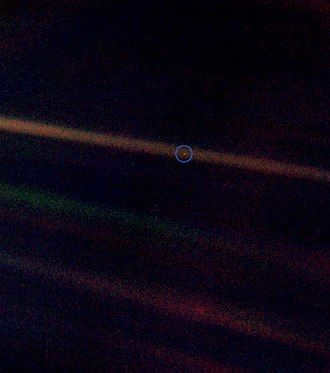
A stunning image of our planet Earth (marked with a circle) was captured by the legendary Voyager 1 spacecraft when it was situated 6.4 billion kilometers (4 billion miles) away. The dazzling streaks of light that can be seen are actually diffraction rays originating from the Sun (which is located outside the frame on the left). This famous photograph is famously referred to as the “Pale blue dot”.
The process of discovering and exploring the solar system involves observing, visiting, and expanding our knowledge and understanding of the vast celestial neighborhood that surrounds our planet. This includes studying the Sun, Earth, and Moon, as well as the major planets such as Mercury, Venus, Mars, Jupiter, Saturn, Uranus, and Neptune, along with their respective satellites. Additionally, it encompasses the study of smaller celestial bodies like comets, asteroids, and cosmic dust particles.
The solar system, which consists of planets, moons, and smaller objects orbiting around the sun, is like a cosmic backyard for humanity. Although the distances between planets are much smaller than interstellar distances, they still present a formidable challenge that can be overcome with technology.
Background
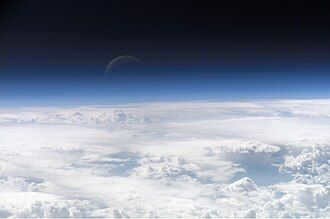
Historical Background and Initial Scientific Observations
Advancement in Telescope Technology and New Observations
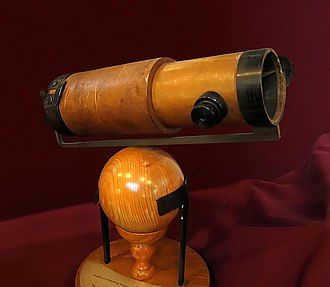
The initial exploration of the solar system was carried out using a telescope, marking the beginning of astronomers’ attempts to chart the celestial bodies that were too faint to be observed with the naked eye.
Galileo was the pioneer in uncovering specific characteristics of individual entities within the solar system. He made groundbreaking observations, such as the presence of craters on the Moon, sunspots on the Sun, and the existence of four satellites orbiting Jupiter. [2] Christian Huygens built upon Galileo’s findings by discovering Saturn’s satellite, Titan, and providing insights into the shape of Saturn’s ring. [3] Subsequently, Giovanni Domenico Cassini expanded our knowledge by identifying four additional satellites of Saturn and Cassini’s Division within Saturn’s rings. [4]
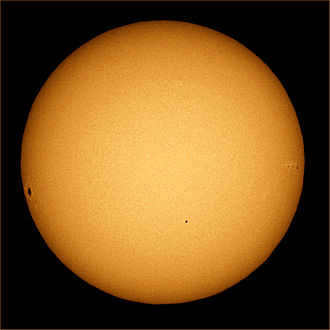
The sun was captured in a photograph using a telescope equipped with a special solar filter. This image clearly shows sunspots and darkening of the limbs, with the planet Mercury transiting the lower part of the sun’s face.
In 1705, Edmond Halley made a significant discovery when he noticed that a comet reappeared every 75-76 years during repeated observations. This provided evidence that there were celestial objects other than planets orbiting the sun. This finding coincided with the introduction of the term “Solar System” in English around the same time in 1704.
In 1781, while searching for double stars in the constellation Taurus, William Herschel observed what he initially thought was a new comet. However, further analysis of its orbit revealed that it was actually a previously undiscovered planet, Uranus.
Giuseppe Piazzi made a significant finding in 1801 when he discovered Ceres, a small celestial body located between Mars and Jupiter. Initially, it was believed to be a planet, but subsequent observations of other similar objects in the same area led to its reclassification as an asteroid. [8]
By 1846, astronomers noticed irregularities in the orbit of Uranus, which led to speculation that a larger planet might be exerting gravitational influence on it. Eventually, Urbain Leverrier’s calculations from Russia led to the discovery of Neptune. [9] In 1859, Leverrier proposed the existence of an intra-Mercurian planet called Vulcan to explain the excess precession of Mercury’s perihelion orbit. However, this hypothesis turned out to be irrelevant.
While the exact moment of the solar system’s discovery remains a subject of debate, three observations made in the nineteenth century provided undeniable evidence of its nature and position within the universe. The first breakthrough came in 1838 when Friedrich Bessel successfully measured stellar parallax, which refers to the apparent shift in a star’s position caused by the Earth’s orbit around the Sun. This groundbreaking experiment not only confirmed the heliocentric model but also revealed the immense distance separating the solar system from the stars.
In 1859, Robert Bunsen and Gustav Kirchhoff utilized a newly invented spectroscope to analyze the Sun’s spectral signature. Their findings demonstrated that the Sun and Earth shared the same elements, establishing a physical connection between our planet and other celestial bodies visible from Earth. Father Angelo Secchi then took this research a step further by comparing the Sun’s spectral signature to that of other stars, discovering a striking similarity. This realization led to the hypothesis that other stars might possess their own systems, although it would take almost 140 years to prove this theory. [10]
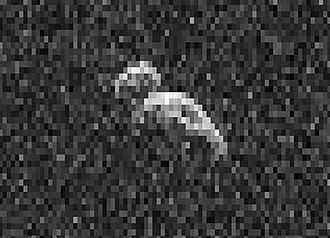
A radar image of 2006 DP14, a small asteroid that came close to Earth in early February 2014.
Additional differences in the paths of the outer planets caused Percival Lowell to determine that there must be another planet, known as “Planet X,” beyond Neptune. After Lowell’s death, his Lowell Observatory conducted a search that eventually led to the discovery of Pluto by Clyde Tombaugh in 1930. However, Pluto was too small to disrupt the paths of the outer planets, so its discovery was unintentional. Like Ceres, Pluto was initially believed to be a planet, but after the identification of many other objects of similar size in its vicinity, it was reclassified as a dwarf planet by the International Astronomical Union in 2006. [9]





